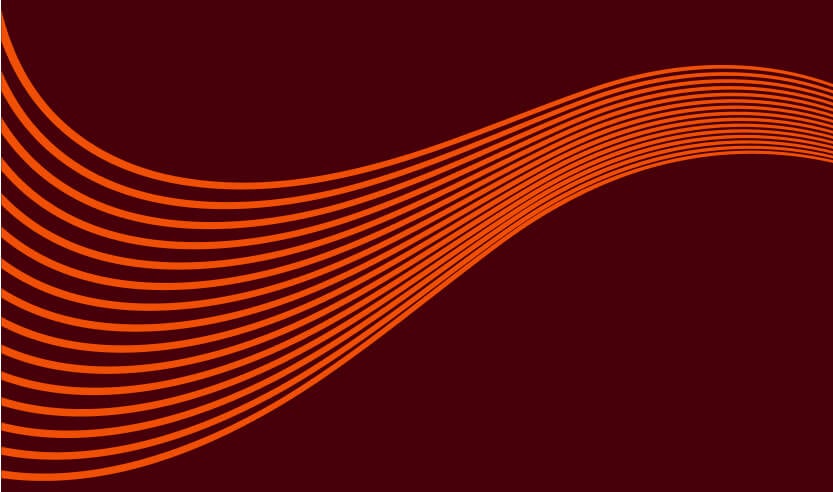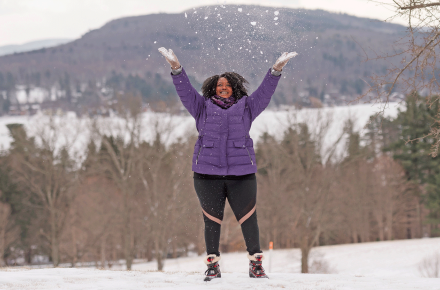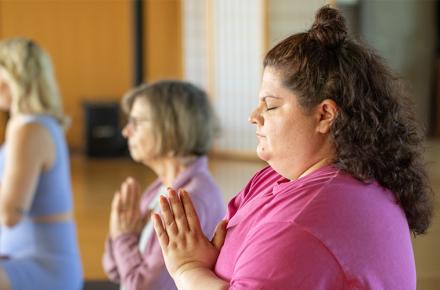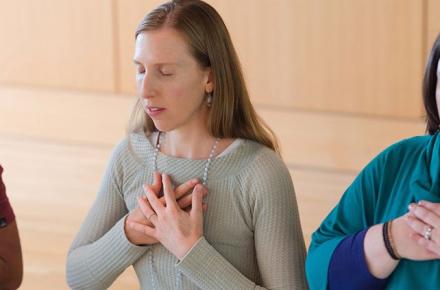Holding the Pose: A Q&A with Janna Delgado
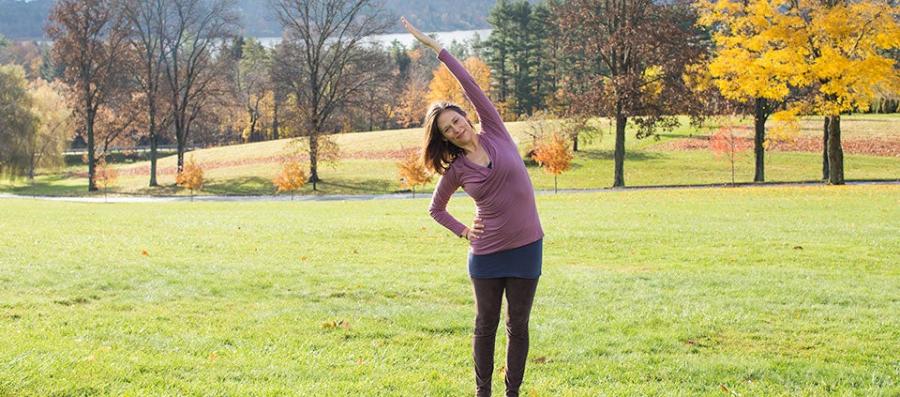
Kripalu Yoga teacher, Ayurvedic Yoga Specialist, and senior faculty member Janna Delgado answers questions about the practice of yoga, exercises for the feet, and yoga-class etiquette.
When coming into Upward-Facing Dog, how should I be utilizing my leg and abdominal muscles? Also, can you describe where my shoulders and arms should be in reference to my neck and head?
The leg muscles provide the power for the pose, so they should be engaged and active. The strength of the legs also supports the spine and protects the lower back. The knees are lifted and the toes are pointed, with the tops of the feet pressing firmly down into the floor. Maintain an internal rotation of the upper legs—the outer thighs should roll toward the floor in order to broaden the sacrum and prevent compression of the low back.
Core engagement is the other safeguard for the low back. You want to lift the perineum up, and draw the solar plexus in and up. The sacrum and tailbone lengthen down toward the heels, and the buttocks are soft, not clenched. This helps distribute the arc of the back bend evenly throughout the upper, middle, and lower back.
The arms are perpendicular to the floor, but keep a micro-bend in the elbows. The palms of the hands should be right underneath the shoulders, with the fingers spread wide, pressing down through the index finger and thumb. Draw the shoulders away from the ears and onto the lower back, and let the neck elongate as the shoulders drop and the shoulder blades slide down the back of the body. Keep your forehead, temples, and jaw relaxed, without tipping your head backward.
Is there anything I can do to help strengthen my toes/feet?
People typically suffer not from weak feet but from feet that are too rigid, contracted, and tight. It’s not so much about strengthening them as creating more relaxation, tone, and flexibility. My top suggestion is to walk barefoot as much as possible. In the winter, our feet are usually swathed in thick socks and shoes. Our feet can become desensitized as we lose our connection with the earth. There are so many nerves, muscles, and tendons in the soles of the feet, and when they’re in socks and shoes all the time, they’re not getting enough stimulation. When you walk barefoot, you get the energy between you and the earth flowing, and every step you take is like a massage for the feet. You can also actually massage them, maybe at night, with a little sesame oil, to set up the nervous system for a good night’s sleep.
A more vigorous activity for the feet is to roll a tennis ball underneath the arch, heel, and toes to open up the connective tissue, and stimulate and activate the muscles and nerves. Support yourself against a wall or the back of a chair while you do one foot at a time. You can also try ankle rolls: Flip your foot under, so the big toenail is in contact with the floor, and then circle the heel, rolling across the tops of the toes to open up the energy channels and tone the muscles.
Last week, I took a class and the teacher still had us doing backbends 10 minutes before Savasana, which I wasn't a fan of. Is it OK to just do our own thing in these instances? Is it worth giving the teacher feedback?
It’s always a great idea to check in with the teacher—pull them aside before or after class to share your experience. As far as doing your own thing, Kripalu Yoga teachers tend to be very generous and permissive about that, but not all traditions are that way. If you get the green light, be conscious of not distracting others; maybe set up your mat in the back of the room.
I also encourage you to invite inquiry—is it a physical issue that’s creating your resistance to what the teacher is guiding? An emotional issue? A mindset? Maybe there’s something there for you to tap into. Investigating what’s really happening could be a rich part of the practice. Breathe into it, relax, and see what comes up. It might turn out to be a moment of breakthrough.
© Kripalu Center for Yoga & Health. All rights reserved. To request permission to reprint, please e-mail editor@kripalu.org.
























